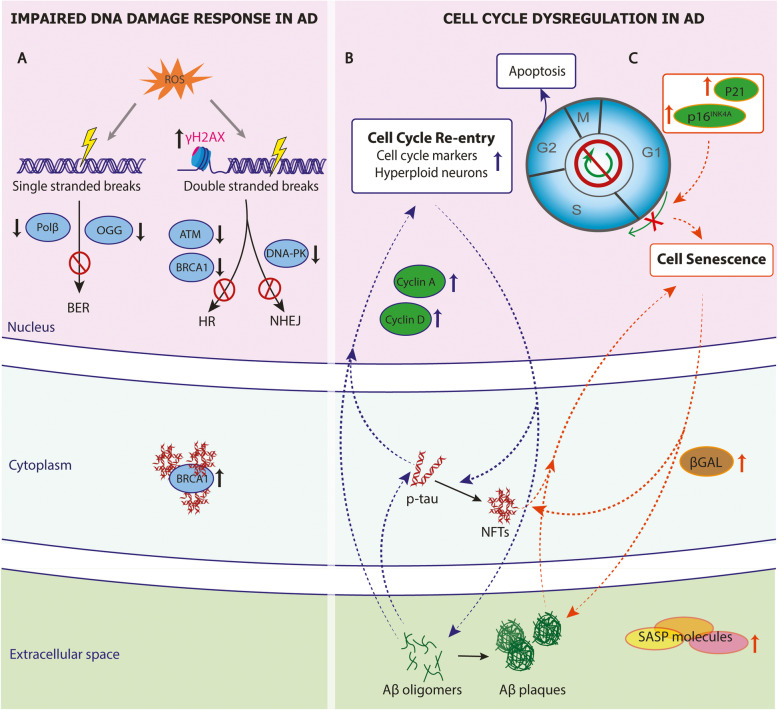Fig. 2.
DNA damage and cell cycle dysregulation in AD. A Reactive oxygen species (ROS) cause DNA single- or double-stranded DNA breaks in AD. The histone variant H2AX (γH2AX), a marker of DNA double breaks, is increased. The enzymes and pivotal molecules for base-excision pair (BER), homologous recombination (HR), and non-homologous end-joining (NHEJ) repairing pathways are reduced, leading to reduced DNA damage response in AD. BRCA1, a pivotal molecule for HR, is downregulated in the nuclei but increased in the cytosol, interacting with neurofibrillary tangles (NFTs). B Dysregulation of cell cycle regulators result in cell cycle reentry (blue labeling) or C cell senescence (orange labeling) in AD. Soluble forms of Aβ and tau increase cyclin A and cyclin D, leading to cell cycle reentry and cell apoptosis. The upregulation of P16, P21 likely induces cell senescence. Senescent cells also express SA-βGal and release pro-inflammatory, senescence-associated secretory phenotype (SASP) molecules. The CCR and cell senescence are likely to form feedback loops with AD pathology. Notably, Aβ oligomers and phosphorylated tau (p-tau) in their soluble forms lead to cell cycle reentry

